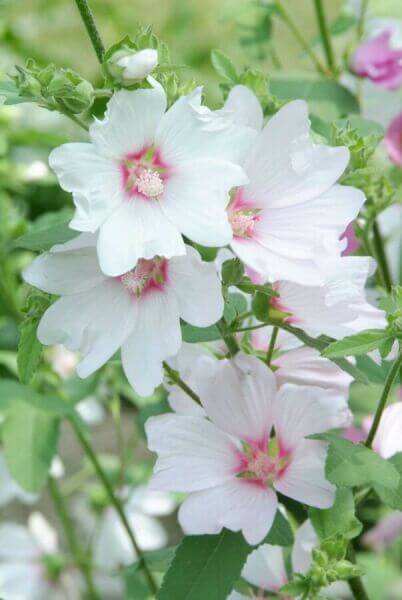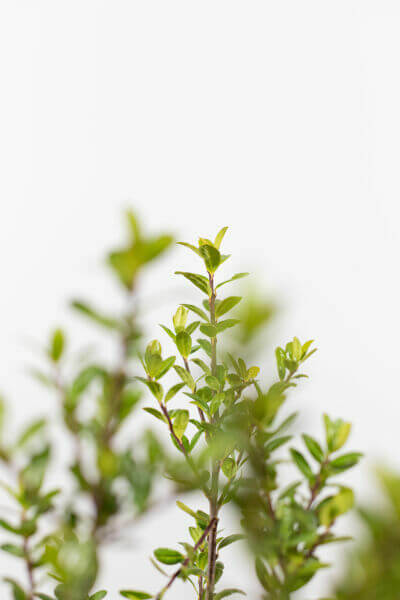Best Hedge Plants For Hedges And Screens
Best Hedge Plants For Hedges And Screens
Blog Article
Best Hedging Plants For Lush Borders
Enhance your garden's allure with lush hedge ranges such as Yew (Taxus), Thuja, Laurel, Photinia, and Bamboo, celebrated for their structural stability and environmental advantages.
Yew and Thuja offer evergreen coverage and winter durability, while Laurel offers fast development and broad, fragrant leaves.
Photinia includes seasonal charm with its lively red foliage, and Bamboo lends a low-maintenance, peaceful ambiance.
These hedges improve air quality, lower noise, and produce tranquil, personal areas.
Correct planting, spacing, and maintenance make sure vigorous growth and eco-friendly consistency.
Explore how these rich ranges can raise your garden's appeal and wellness.
Secret Takeaways
Transform Your Garden With Lush Hedge Varieties
- Select Yew for its thick, evergreen growth and exceptional durability.
- Opt for Laurel for its fast growth and broad leaves, making sure fast personal privacy.
- Choose Photinia for its dynamic seasonal foliage, which turns a striking dark red.
- Use Bamboo for a low-maintenance, winter-hardy hedge with visual appeal.
- Area plants 2-3 per meter and prune frequently for optimum development and health.
Popular Hedge Plants
When changing a garden with lavish hedge ranges, it's vital to consider popular hedge plants such as Yew, Thuja, Laurel, and Photinia due to their unique characteristics and benefits.
Yew (Taxus) is highly esteemed for its longevity and dense, green growth, making it a prime option for sustaining landscapes.
Thuja is noted for its evergreen foliage and robust winter season durability.
Photinia adds seasonal vibrancy with red leaves that darken over time, producing dynamic visual appeal.
Laurel uses rapid development and fragrant, broad leaves, suitable for fast personal privacy.
Furthermore, Bamboo is an outstanding option for ambiance, using a low-maintenance, winter-hardy option that improves the garden's aesthetic with its sophisticated, swaying walking sticks.
These selections cater to a range of horticultural requirements and preferences.
Benefits of Garden Hedges
Garden hedges use a wide range of benefits, making them an important addition to any landscape. These natural barriers are economical to execute and offer substantial wind security, improving air circulation and contributing to sound reduction. The thick foliage of hedges like Thuja and Beech makes sure privacy by obstructing visibility, creating a remote and serene environment.
Hedges likewise play an important role in microclimate guideline, offering a stable environment that promotes plant development and lessens temperature level changes. Their detailed leaf structures filter contaminants, enhancing air quality and contributing to a much healthier garden ecosystem.
Additionally, hedges master noise decrease, soaking up and deflecting sound waves to lower ambient sound levels. This dual performance of providing both acoustic and visual personal privacy enhances the general harmony and visual appeal of any garden.
Planting and Maintenance Tips
For a successful hedge, precise preparation of the planting location is crucial. Ensure the soil has appropriate pH and drain to support strong root development.
Space the plants properly for the chosen types. Water the hedge frequently throughout its initial growth stage, changing as needed with seasonal modifications.
Implement a systematic pest control and disease prevention strategy, using chemical or natural treatments when necessary. Regularly check for aphids, mites, and fungal infections.
Apply mulch to keep moisture and reduce weeds. Seasonal pruning promotes thick development and air blood circulation, necessary for plant health.
Following these standards will assist you cultivate a dynamic, well-kept hedge that enhances the charm of your garden.
Spacing and Trimming Guidelines
Spacing and Trimming Standards
Proper spacing and cutting are important for cultivating healthy, aesthetically appealing hedges. Appropriate spacing makes sure each plant gets adequate nutrients, light, and airflow.
Follow these standards for ideal hedge maintenance:
- Spacing: Position hedge plants 2-3 plants per meter to motivate robust development.
- Pruning Methods: Regular pruning is necessary for preserving desired hedge height and shape. Cut new development in summertime and cut back older wood throughout winter season.
- Seasonal Care: Change trimming schedules and methods according to seasonal requirements to guarantee plant health.
- Hedge Height: Regularly display and trim to keep the desired hedge height and attain uniform aesthetics.
Following these actions will guarantee your hedge flourishes, boosting both the appeal and functionality of your garden.
Picking the Right Hedge
Choosing the Right Hedge
Selecting the appropriate hedge includes evaluating elements such as fully grown height, foliage density, and environmental resilience. Effective hedge plant choice requires comprehending each types' growth qualities and site-specific flexibility.
For instance, Yew (Taxus) uses excellent longevity and thick development, while Thuja is significant for its winter resilience. Furthermore, thinking about maintenance requirements is vital; fast-growing types like Laurel or Privet demand regular trimming, whereas low-maintenance choices like Bamboo or Ivy may be more effective for those seeking minimal upkeep.
Environmental factors such as soil type, light accessibility, and moisture conditions must likewise assist the choice procedure. This cautious approach ensures the chosen hedges will flourish, offering both aesthetic and functional advantages to the garden landscape.
Shipment and Planting Suggestions
To ensure your hedge plants prosper, they ought to be delivered by specialized couriers and planted promptly upon arrival.
Follow these essential actions for effective planting:
- Soil Preparation: Enhance the soil with raw material to enhance drain and nutrient content.
- Planting Depth: Create a trench two times the width and equivalent to the depth of the root ball.
- Watering Methods: Water thoroughly after planting, keeping the soil regularly wet but not saturated.
- Mulching: Use a layer of mulch to keep moisture and reduce weeds.
Client Support and Service
Given the vital role of prompt support in horticultural pursuits, our customer assistance team is available 6 days a week through telephone, email, and social media to provide expert suggestions and quickly address any issues. Their dedication to fast reaction times ensures consumer complete satisfaction by resolving inquiries connected to plant health, ideal planting methods, and maintenance schedules.

This extensive support group, enhanced by an outstanding 9.3/ 10 client rating, highlights our dedication to improving the gardening experience for every customer.
Frequently Asked Concerns
For How Long Does It Consider Hedge Plants to Establish?
Hedge plants generally need one to three years to end up being fully developed, with the exact duration differing by species and growing conditions.
Efficient care during this vital duration is important for robust development. Consistent watering, watchful weed control, and proper fertilizer application are pivotal in promoting strong root development.
For example, fast-growing types like Laurel might establish more rapidly, while slower-growing varieties such as Yew might take longer. Diligent maintenance speeds up the establishment procedure, leading to dense and healthy hedges.
What Are the very best Hedge Plants for Privacy?
The question of the very best hedge plants for personal privacy includes assessing evergreen and deciduous alternatives.
Evergreen hedges like Thuja, Laurel, and Cypress supply year-round coverage, guaranteeing continuous privacy.
In contrast, deciduous hedges such as Beech use seasonal personal privacy, shedding leaves in cooler months.
Key maintenance suggestions for privacy hedges include regular cutting, fertilizing in spring, and appropriate spacing-- normally 2 to 3 plants per meter.
In addition, constant watering and thorough weed elimination are vital for promoting healthy, thick development.
Can Hedge Plants Bring In Wildlife to My Garden?
Yes, hedge plants can bring in wildlife to your garden by supplying necessary advantages like shelter, food, and nesting websites, consequently improving local biodiversity. For instance, yew, holly, and laurel are excellent for attracting birds, while ivy supports a range of pests.
Nevertheless, it's crucial to keep in mind that there are some disadvantages, such as increased maintenance to handle bugs and regular upkeep. Thoroughly picking and preserving hedge varieties can help balance these downsides and advantages, ultimately cultivating a sustainable and dynamic community in your garden.
Are There Any Blooming Hedge Plants Available?
Yes, there are flowering hedge plants offered that can enhance the charm of your garden.
For example, Elaeagnus, likewise called Olive Willow, produces aromatic white flowers in the fall, adding a touch of sophistication.
Photinia, another popular choice, showcases lively red leaves that develop into an abundant green, producing a dynamic visual result throughout the seasons.
To ensure these plants grow, it's important to practice correct pruning methods and seasonal upkeep, such as trimming new development in the summer and cutting down in the winter.
These steps will assist preserve the health and visual appeal of your flowering hedges.
How Do I Prevent Bugs in My Hedge Plants?
To avoid insects in hedge plants, use natural pest control techniques and keep proper hedge care. Introduce useful insects like ladybugs, which prey on hazardous bugs, to develop a balanced community.
Frequently inspect your hedges for signs of invasion and promptly remove any affected parts to prevent the spread. Guarantee the health of your hedges by using well balanced fertilizers and supplying appropriate water.
Make use of mulching to maintain soil wetness and correct spacing to reduce plant stress and promote robust growth. These practices collectively help in lessening insect problems and preserving a healthy hedge.
Conclusion
In essence, selecting the best hedge ranges such Additional info as Yew, Thuja, and Laurel can transform any garden into a peaceful haven. These plants provide year-round greenery, enhance visual appeal, and deal useful advantages like sound reduction and wind protection.
Proper planting strategies, precise spacing, constant watering, and seasonal trimming are important for ideal growth.
Dependable delivery services and skilled consumer support ensure a smooth experience from purchase to planting, making it easier than ever to raise your outdoor area.
Garden hedges provide a wide range of benefits, making them an important addition to any landscape. These natural barriers are affordable to implement and supply considerable wind defense, improving air circulation and contributing to sound reduction. The thick foliage of hedges like Thuja and Beech guarantees personal privacy by obstructing visibility, developing a secluded and tranquil environment.

Pruning Methods: Routine pruning is vital for keeping preferred hedge height and shape. Trim new growth in summer season and cut back older wood throughout winter season.
Report this page